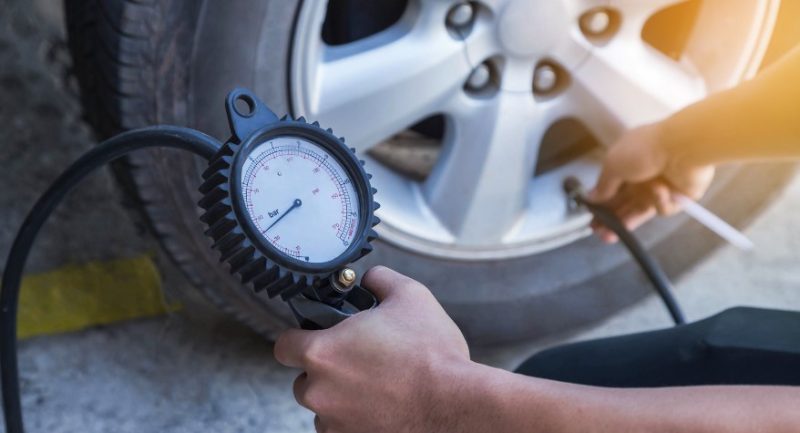Tyre Checking Tips for Safe Travels
As you prepare for your next road trip or daily commute, it’s crucial to ensure that your vehicle’s tyres are in top condition. Neglecting the tyre maintenance can lead to poor performance, increased fuel consumption, and even dangerous situations on the road. In this article, we’ll provide you with essential advice on how to check your tyres before traveling, so you can enjoy a safe and comfortable journey.
Before we dive into the specifics, it’s worth mentioning that investing in high-quality tyres from reputable suppliers like tyres.net can make a significant difference in your vehicle’s overall performance and safety. Now, let’s explore the key aspects of tyre checking that every driver should know.
1. Tread Depth
Tyre tread depth is a critical factor in maintaining proper grip and traction on the road, especially in wet or slippery conditions. Adequate tread depth helps to disperse water from beneath the tyre, reducing the risk of hydroplaning and improving overall handling.

To check your tyre’s tread depth, you can use either a tread depth gauge or a simple coin test:
Tread Depth Gauge:
- A tread depth gauge is a small, inexpensive tool designed specifically for measuring tyre tread depth.
- Insert the gauge into the main tread grooves at several points around the tyre, ensuring you check both the center and outer edges.
- The gauge will provide a precise measurement, typically in 32nds of an inch or millimeters.
Coin Test:
- The coin test is a quick and easy way to estimate your tread depth without a gauge.
- For the penny test, insert a penny into the tyre’s main tread groove with Lincoln’s head facing down. If you can see the top of Lincoln’s head, your tread depth is less than 2/32 of an inch, indicating it’s time to replace your tyres.
- For a slightly earlier indication, use a quarter instead. If the tread doesn’t reach the top of Washington’s head, your tread depth is approximately 4/32 of an inch or less, signaling it’s time to start shopping for new tyres.
It’s important to note that while the legal minimum tread depth is 2/32 of an inch in most areas, many experts recommend replacing tyres when the depth reaches 4/32 of an inch for optimal safety. New tyres typically have a tread depth between 10/32 and 11/32 of an inch.
When checking tread depth, be sure to measure at least three points around the tyre: the outer edge, center, and inner edge. Uneven wear across the tyre can indicate issues with inflation pressure or wheel alignment, which should be addressed promptly.
In addition to the coin test and tread depth gauge, most tyres have built-in wear indicators, which are small, raised bars that appear between the tread blocks when the tyre has worn down to 2/32 of an inch. If these indicators are flush with the surrounding tread, it’s definitely time for new tyres.
Remember, maintaining proper tread depth is crucial for your vehicle’s performance and safety. Check your tyres regularly, and don’t hesitate to replace them when necessary.
2. Tyre Pressure
Proper tyre pressure is essential for even wear, fuel efficiency, and handling. Incorrect pressure can lead to poor mileage, uneven tyre wear, or even a tyre blowout. To ensure you’re getting the most out of your tyres, it’s crucial to maintain the correct pressure.

To check your tyre pressure, follow these steps:
1. Consult your vehicle’s manual or the tyre placard on the driver’s side door jamb for the recommended pressure. This is the pressure suggested by the car’s manufacturer and is the lowest PSI (pounds per square inch) one should inflate the tyres to.
- For most sedans, minivans, and mini pickups, the recommended PSI generally ranges from 27 to 32, but can reach up to 40.
- For larger vehicles like trucks and SUVs that carry heavier loads, the PSI is typically 4 to 8 higher than smaller cars, around 45.
- Note that front and back tyres may require different pressures, according to the manufacturer.
2. Unscrew the valve stem cap from the tyre’s valve stem, which is a black or silver pencil-sized extension near the hubcap.
3. Press an air pressure gauge evenly onto the valve stem and record the reading. If you hear a hissing sound, adjust the angle of the gauge for a proper seal.
- Digital gauges may require pressing a button to get a reading, while traditional gauges provide the measurement automatically.
4. Compare the gauge’s reading to the recommended PSI for your vehicle. If the pressure is too low, use an air compressor to inflate the tyre to the correct level. If it’s too high, release air by gently pressing the valve stem until the desired PSI is reached.
5. Replace the valve stem cap, which keeps dirt and moisture away from the valve mechanism that holds air in the tyre.
6. Repeat the process for all four tyres, including the spare if applicable.
It’s best to check tyre pressure when the tyres are ‘cold’, meaning before driving or at least three hours after, as friction and heat from driving can affect the pressure. Check your pressure every time you fill up your gas tank to catch any issues early.
3. Tyre Wear and Damage
Regularly inspecting your tire’s for signs of wear and damage can help you identify potential issues before they become serious problems. Look out for:
- Uneven wear: This could indicate alignment, suspension, or inflation issues.
- Cuts, bulges, or blisters: These could be signs of internal damage and require immediate attention.
- Foreign objects: Remove any stones, nails, or debris embedded in the tread.
If you notice any unusual wear patterns or damage, consult a professional tyre service provider for further assessment and advice.
4. Tyre Age
Even if your tyres appear to be in good condition, it’s important to consider their age. Tyres can degrade over time due to factors like exposure to sunlight, extreme temperatures, and infrequent use. As a general rule, tyres should be replaced after six years, regardless of their apparent condition.

To determine your tyre’s age, look for the DOT (Department of Transportation) code on the sidewall. The last four digits indicate the week and year of your tyre manufacture. For example, “2320” means the tyre was produced in the 23rd week of 2020.
5. Wheel Alignment and Balancing
While not directly related to tyre checking, wheel alignment, tyre fitting, and balancing play a crucial role in tyre wear and vehicle performance. Have your wheels aligned and balanced according to the manufacturer’s recommendations or if you notice any of the following:
- Uneven or rapid tyre wear
- Vehicle pulling to one side
- Vibrations in the steering wheel or seat
Regular alignment and balancing can extend the life of your tyres and ensure a smoother, safer ride.
Conclusion
By following these simple tyre-checking tips, you can significantly improve your vehicle’s safety, performance, and fuel efficiency. Remember to check your tread depth and tyre pressure and inspect for wear and damage regularly. Also, consider the age of your tyres and invest in quality replacements when necessary.
Before setting off on your next adventure or daily commute, take a few minutes to perform these checks and give yourself peace of mind on the road. Safe travels!







